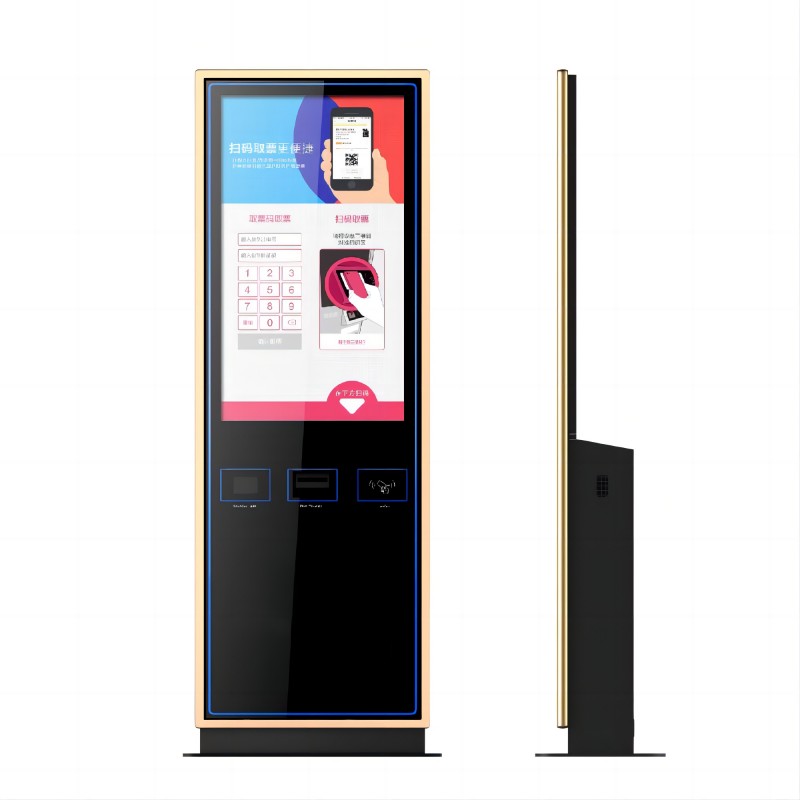A Kiosk in cinema is an automated self-service device designed to streamline the ticketing, concessions, and information dissemination processes within movie theaters. These kiosks typically provide services such as ticket purchase, seat selection, concession ordering, and information about movie schedules and promotions. They are designed to enhance the movie-going experience, reduce wait times, and improve operational efficiency for cinema operators.

Industry Uses:
1. Ticket Purchase: Allow customers to buy tickets, select seats, and print tickets.
2. Concessions Ordering: Enable customers to order food and beverages, reducing lines at concession stands.
3. Movie Information: Provide information about movie schedules, trailers, and promotions.
4. Loyalty Program Management: Allow customers to sign up for or manage loyalty programs and redeem points.
5. Customer Service: Offer information on theater amenities, policies, and answer common questions.
6. Advertising: Display advertisements for upcoming movies, events, and theater promotions.
1. Efficiency: Reduce queues and wait times by enabling self-service for ticketing and concessions.
2. User-Friendly: Provide an intuitive interface for customers to easily navigate and complete transactions.
3. Cost Savings: Lower operational costs by reducing the need for staffed ticket counters and concession stands.
4. Enhanced Experience: Improve customer satisfaction by offering a seamless and convenient self-service option.
5. Increased Sales: Promote upselling and cross-selling opportunities for tickets and concessions.
6. 24/7 Availability: Operate around the clock, allowing customers to purchase tickets or get information at any time.
1. Touchscreen Display
- Used for user interaction and information display. Typically equipped with high-resolution capacitive touchscreens to ensure smooth operation and clear display.
2. Barcode Scanner
- Used to scan tickets, loyalty cards, and promotional codes.
3. Printer
- Prints tickets and receipts. Equipped with thermal printing technology for durability and clarity.
4. Card Reader
- Supports reading of magnetic stripe and chip cards for processing payments and loyalty program transactions.
5. RFID Reader
- Used to scan and identify RFID-tagged cards for loyalty programs or special access.
6. Camera
- Used for security monitoring and customer interaction recording.
7. Audio Output Devices
- Provide voice prompts and multi-language support to enhance the user experience.
8. Network Connection Module
- Supports wired and wireless network connections to ensure real-time communication and data transmission with backend systems.
9. Durable Enclosure
- Protects internal components from damage and unauthorized access, typically featuring a robust security lock.
1. Operating System
- Common operating systems include Windows, Linux, or Android, providing a stable running environment and diverse development interfaces.
2. Application Software
- Custom-developed Kiosk in cinema applications responsible for interface display, user interaction, and data processing. Designed in a modular fashion to facilitate feature expansion and updates.
3. Backend Management System
- Responsible for device monitoring, data collection and analysis, content management, and system maintenance. Provides remote monitoring and management functions to ensure the normal operation and timely maintenance of the devices.
4. Database System
- Stores customer data, transaction records, and log information. Common database systems include MySQL, PostgreSQL, etc.
5. Network Communication Module
- Uses TCP/IP protocol to exchange data with the backend server through wired or wireless networks. Supports VPN and other secure connection methods to ensure data transmission security.
6. Security Module
- Includes firewalls, encryption modules, authentication systems, etc., to ensure the security of data and customer information.
7. Interface Module
- Provides interfaces with ticketing systems, concession management systems, and customer relationship management (CRM) platforms to ensure seamless integration and data sharing with external systems.